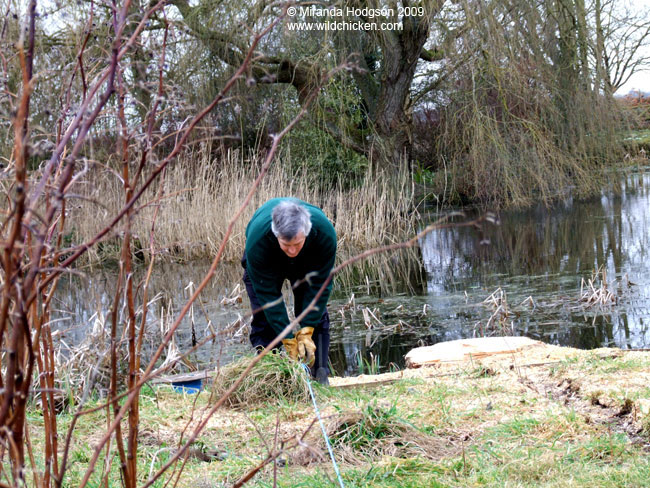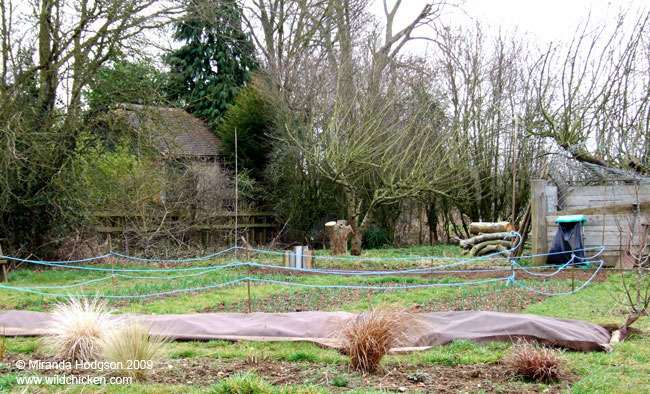February 2009 - Odd jobs in the garden
It seems that every year I have been alive I always forget how cold winter can be. During the soft warmth of summer, the damp and frigid months of winter fade into the background and each year is yet another rude awakening.
Many times Iíve heard and read that the English winter is nothing. Why, in Canada, Russia, Scandinavia, the snow is several feet deep for months on end. We know nothing, we are soft and donít know what winter means. Granted, those places do get far more snow, real snow, and for much longer, but the English winter has a special damp chilliness to it that penetrates to the marrow of your bones until you feel that you will never be warm again. Iíve spoken to Scandinavians who have said that they have never felt so cold as in an English winter because of the dampness. Wrap up warm and stand in a supermarket freezer set to -20C with low humidity and yes, itís cold, but itís a different cold to standing outside in a north east wind, when itís 3C and the humidity is 80%.
Those places that get all that snow, theyíre lucky. All too often, the English winter is endlessly grey, cold and damp. There are days at a time of twilight, when the cloud cover is so thick that it barely gets light at all. If only we had a layer of snow to brighten the interminable greyness, it wouldnít be so depressing. I remember a few years ago reading that the people of Moscow were becoming depressed because they had no snow. They were experiencing an English winter and they hated it.
The only way is to keep moving. If you stop, the chill will get to you and youíll run indoors and not come out till April. So we carried on with the digging and weeding and then turned to the raspberry bed. This all needed cutting back and the stems to be piled up and burned. The ashes were scattered around the plants to provide potassium for the coming yearís fruit. I divided some of the plants and we dug out a new strip next to the main raspberry planting for them to go in.

Karl measuring a new raspberry bed
About this time, Mrs Mawle asked Karl for help with an apple tree. She had three apple trees in too small an area, two Bramley's Seedling and a Blenheim, and they werenít thriving because of overcrowding. What hasnít helped the trees is the nearby hedgerow. Itís a fine hedgerow, put in by Mrs Mawle's late husband, who made a good choice in hedging plants. There is wild cherry (Prunus avium), hawthorn (Crataegus monogyna), Viburnum lantana, Euonymus europaeus and elder (Sambucus nigra), all good plants for wildlife. The intention is to have the hedge laid in a few weeks.
Karl got out his saws and axes, cut down one of the Bramleyís Seedling trees and logged the pieces. By the time Mrs Mawle came over to see if heíd started yet, heíd finished. The wood is beautiful inside and turns a rich orange while it is still wet. Weíll cut some up and burn it when itís dry; the smell is sweet and fragrant and it gives good heat.

Lopped apple tree in the background
© Copyright Miranda Hodgson 2009